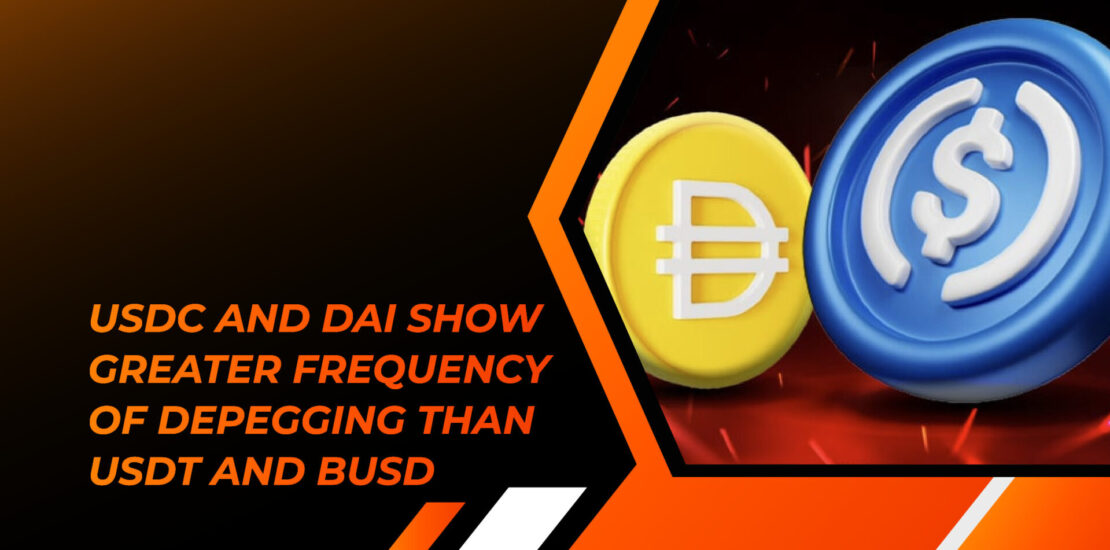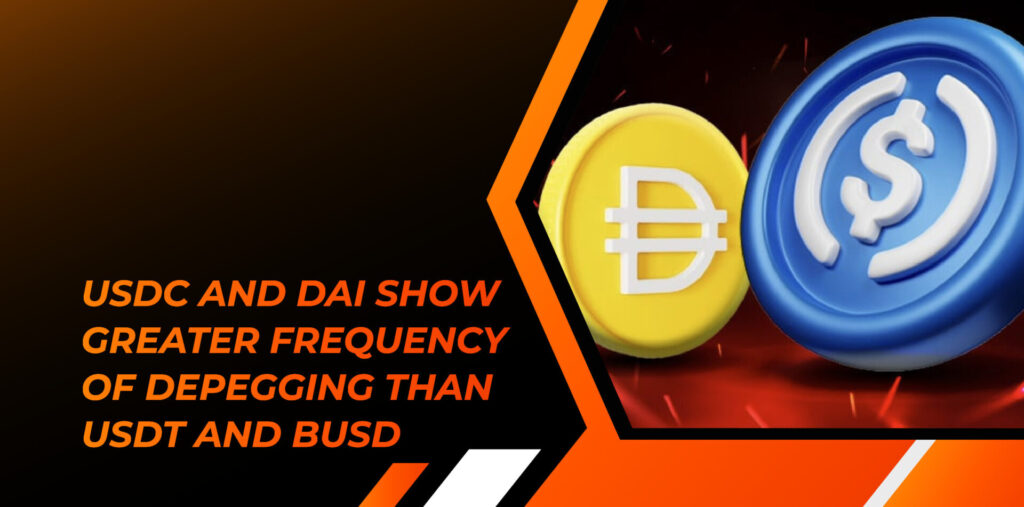- September 13, 2023
- Posted by: [email protected]
- Category:


A recent report from S&P Global has shed light on the relative stability of various dollar-pegged stablecoins in the cryptocurrency market. Notably, stablecoins issued by Circle and MakerDAO, such as USD Coin (USDC) and Dai (DAI), have proven to be less stable compared to those from Tether (USDT) and Binance (BUSD) over the past couple of years.
The research, authored by Dr. Cristina Polizu, Anoop Garg, and Miguel de la Mata, delved into the valuation and depegging tendencies of five prominent stablecoins: Tether (USDT), Binance USD, Paxos (USDP), USDC, and DAI.
The findings reveal that both USDC and DAI have experienced more frequent periods below a dollar in value compared to USDT and BUSD over the preceding two years. In the most prolonged and significant de-peg event, USDC traded below $0.90 for 23 minutes, while DAI remained below $1 for 20 minutes. In contrast, USDT briefly dipped below $0.95 for only one minute, and BUSD did not fall below $0.975 from June 2021 to June 2023.
Furthermore, the frequency of de-pegging events was notably higher for USDC and DAI when compared to USDT and BUSD during this two-year timeframe. The research team acknowledged that one-minute de-peg events could be attributed to market noise, particularly for stablecoins approaching the $1 threshold. Longer de-pegging events were considered more significant, yet the results still favored USDT’s stability over USDC.
USDC fell to $0.87 in March 2023 as a result of the collapse of Silicon Valley Bank, a significant USDC reserve holder at the time. MakerDAO, which had over 3.1 billion USDC in reserves collateralizing DAI, also faced depegging challenges.
Dr. Polizu and her colleagues concluded that maintaining a stablecoin peg and a robust stabilization mechanism requires effective governance, sufficient collateral and reserves, liquidity, market confidence, and widespread adoption.
It’s worth noting that Tether (USDT) has faced persistent skepticism and negative media attention for years. However, the research findings suggest that USDT has exhibited more stability compared to its rival, USDC, over the same period.
Moreover, USDT has experienced a significant supply increase of 25% since the beginning of the year, reaching 83 billion in total supply. This surge has solidified Tether’s dominant position in the stablecoin market, claiming a commanding 67% market share. In contrast, Circle, the issuer of USDC, has seen a reduction of 41.5% in USDC supply and a decline in market share to 21% during the same period. These developments underscore the shifting dynamics within the stablecoin ecosystem.



